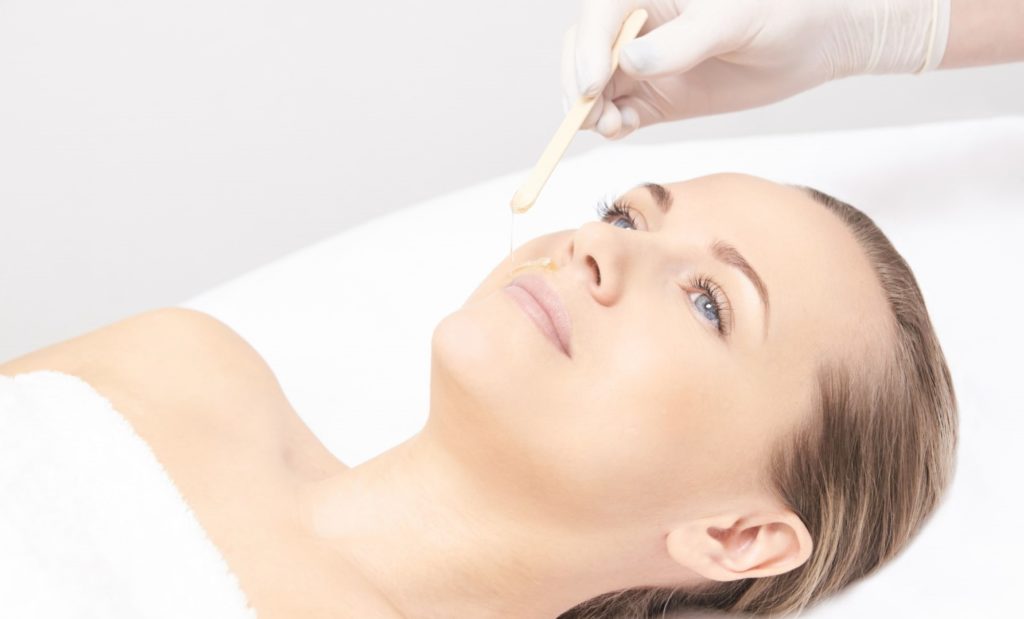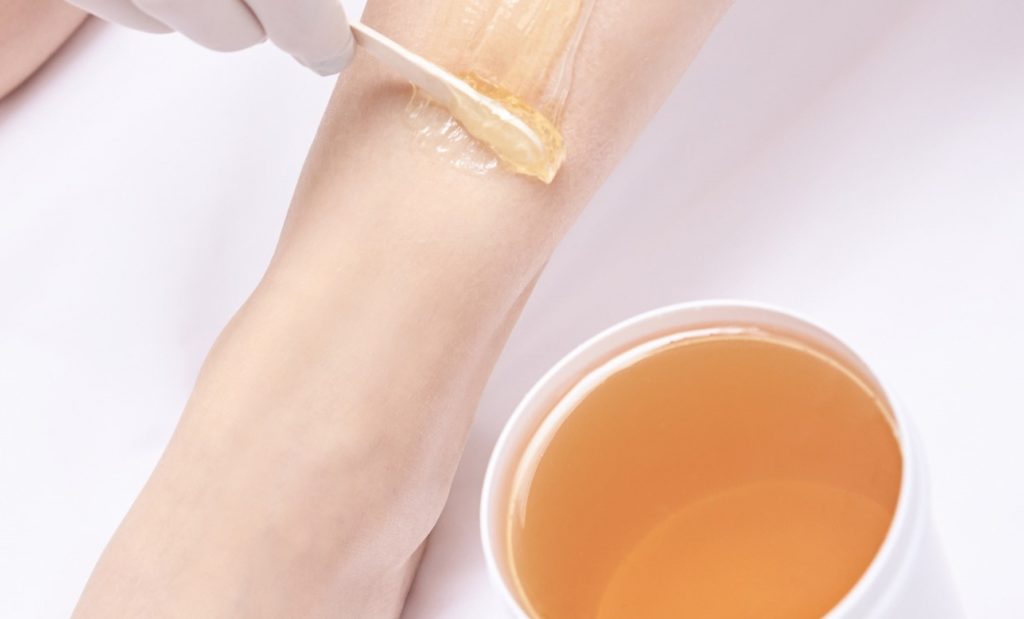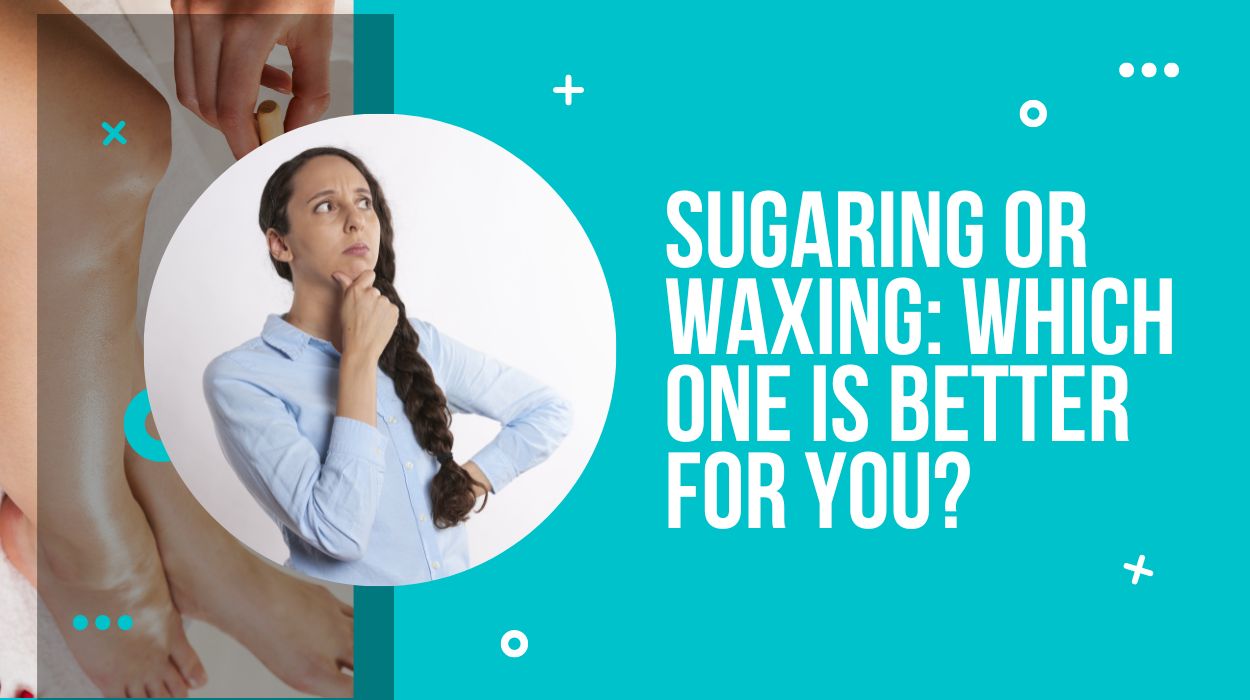Sugaring or waxing, which one is a better option for you? As both the methods involve heating the substance and then applying it, what makes them different from each other?
Do you want to know about sugaring and waxing in detail? Read on! And learn about them in detail by differentiating on different aspects.
This article will cover eleven points covering the differences between sugaring and waxing to let you better understand them.
Sugaring vs. Waxing

Sugaring and waxing must sound somewhat similar to you, but there is much difference in their technique and other minute benefits. Let’s dive deeper into sugaring and waxing and know them in detail!
1. What are Sugaring and Waxing?
Sugaring is, also known as sugar waxing, is a method of hair removal in which a sticky substance pulls out the unwanted hair from the roots. It is made of lemon juice, sugar, and hot water, involving only these natural ingredients. And this mixture is applied to your skin at room temperature, which prevents burns. Sugaring also exfoliates your skin, removing dead skin cells and tan, providing brighter skin.
On the other hand, waxing is a method that also pulls out the unwanted hair from the roots giving you smoother and exfoliated skin. But, it is different from sugaring because it is made of essential oils, herbal extracts, oils, additives, and rosins and comes in different types made of different ingredients. And you need to apply it to the skin at a hot temperature for better hair removal.
2. Application Method

In sugaring, you have to apply the sticky paste in the opposite direction of the hair growth and pull it in the direction of the hair growth, before which, you have to heat the three ingredients of it: lemon, sugar, and water to form a paste. Just make a ball of the sticky substance, stick to the skin, pull towards the opposite hair growth direction, pull back, and remove the hair.
First, you have to spread some powder on the area you want to wax for waxing. And you can use any of the talc powder, baby powder, or cornstarch powder. Start applying the wax on smaller portions of your skin and spread it well in the direction of hair growth. Then using a cotton cloth strip or disposable fiber sheets, pull out the hair in the opposite direction of your hair growth.
Tip: Apply pressure or rub the strips to produce heat before pulling out the hair in the method of waxing.
3. Ingrown Hair
When hair starts growing back into the skin rather than coming out of the layer of the skin, it is called ingrown hair. It is caused due to breakage of hair, wrong method of hair removal, or wearing tight clothes just after the removal of hair.
As you know, the hair is pulled in the direction of hair growth in the case of sugaring, which reduces the risks of bending the hair. And which reduces breakages of hair, therefore, reducing the risks of ingrown hair. In fact, there are no chances of ingrown hair in sugaring.
And in waxing, you pull hair in the opposite direction, which is opposite to the natural hair growth, leading to some probability of ingrown hair. To avoid ingrown hair by waxing, follow the correct hair removal procedure mentioned above.
4. Side Effects
After sugaring, some of you may experience redness, itching, and irritation. As mentioned above, there are fewer chances of ingrown hair, but if you do not do it correctly, you might experience ingrown hair too. You might also see folliculitis, inflammation, post-inflammatory hyperpigmentation, or infection. The side effects may also occur due to improper hygiene maintenance during the sugaring process.
And in waxing, again, if you do not follow the correct waxing procedure, you may see redness, itching, irritation, and infections. If you have sensitive skin, you may experience some of the side effects of waxing. It can also cause rashes, bumps, ingrown hairs, scarring, allergies, and sun sensitivity. And if you see bleeding on waxing, you have sensitive skin, which can not bear pulling of the skin. Or, you have repeatedly pulled the hair on the same area several times.
5. Pain

Sugaring is said to be less painful than waxing because the mixture of sugaring does not stick firmly to the skin compared to wax. Also, hairs are removed in the same direction as the hair growth.
In waxing, you pull the hair in the opposite direction making it more painful. And as mentioned above, you have to press and let the wax strips nicely stick to the skin for hair removal, which also causes more pain.
6. Comfort
Waxing is stickier than sugaring; you have to apply the heated and melted mixture to the skin in waxing. And on the other hand, sugaring is a sticky substance, but it is not melted and then applied. Also, you can easily wash off sugaring paste from the skin, while in wax, you might need some cloth, tissue, natural oil, or cleanser.
You can do both, sugaring and waxing at home on your own very comfortably. But, you can not set up for waxing anywhere like in sugaring. In sugaring, you only need the paste. But, for waxing, you need many more ingredients like wax strips, containers to melt, and powder.
7. Skin Type

If you have sensitive skin, go for sugaring. Why? Because sugaring involves natural ingredients with no side effects. And you need not pull harder like waxing strips. And if you do not have sensitive skin, go for any of them as they both result similarly except their application method.
8. Repetition on the Same Area
You can repeat sugaring on the same area 3 to 4 times to entirely remove the hair. But, in waxing, you can not pull hair from the same section of the skin again and again as you may experience cuts and bleedings.
You can repeat sugar wax once in two weeks, but for waxing, you need to wait for 3 to 5 weeks to let the hair grow to a length of 1/4 inches long.
9. Biodegradability
Compared to waxing, sugaring is more environmentally friendly as sugar wax is made of 100% natural ingredients, whereas waxing has added preservatives and chemicals.
Sugaring is also biodegradable, and waxing is not; that is, you can throw sugar wax in the garbage safely but not wax. Sugaring is also safer for your skin because of its natural components compared to waxing.
10. Availability
Both sugaring and waxing are available in the market and online websites. You can also make sugar wax at home, but not hard wax. To make sugar wax, take a pan and heat 2 cups of sugar, a quarter a cup of water, and a quarter cup of lemon juice. Using a spatula, stir the ingredients well and boil them for 5 to 7 minutes.
Store the heated mix in a glass jar and let it cool to form a sticky paste. Then start using it at a cool temperature. And in case of hard wax, purchase beeswax or rosin online or from a cosmetic shop. Melt the hard wax at home, and you can add olive or coconut oil to the hard wax while melting to apply to the skin.
11. Cost Efficiency
Sugaring is more cost-efficient than waxing because you can make it at home using the ingredients available in your home kitchen. But, hard wax and sugaring both are less expensive than other hair removal methods that remove hair from the roots.
You May Also Like to Read:
How To Remove Chest Hair? (Temporary Vs. Permanent Methods)
Is Waxing Better Than Using An Epilator?
25 Home Remedies to Remove Facial Hair
How to Remove Upper Lip Hair: 9 Best Ways Explained
Bottom line
It is a win-win situation for both sugaring and waxing, giving effective results. But, the winner entirely depends on your preferences and the benefits you want to enjoy.
If you have sensitive skin, go for sugaring; otherwise, waxing is equally effective. The cons of waxing are that it is not biodegradable and can not be made at home. Also, it might be more painful for some people and not that convenient to use.
So, share your views on which one is better in the comment section below.


